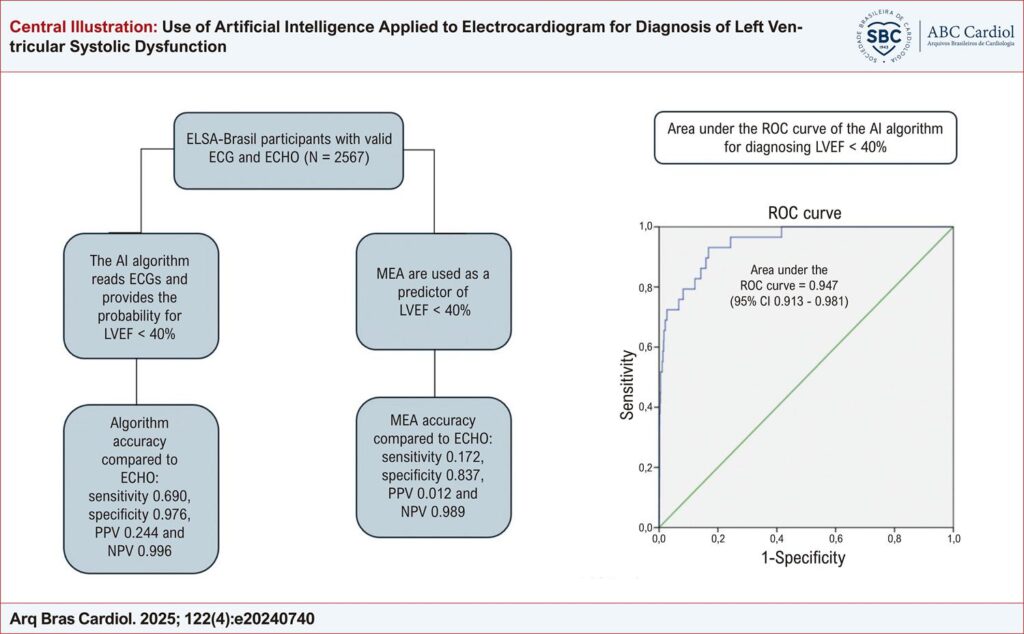Arq. Bras. Cardiol. 2025; 122(4): e20240740
Use of Artificial Intelligence Applied to Electrocardiogram for Diagnosis of Left Ventricular Systolic Dysfunction
Abstract
Background
Heart failure (HF) is a disease associated with an important type of morbidity and mortality. The electrocardiogram (ECG), one of the tests used to evaluate HF, is low-cost and widely available.
Objective
To evaluate the performance of an artificial intelligence (AI) algorithm applied to ECG to detect HF and compare it with the predictive power of major electrocardiographic alterations (MEA).
Methods
This work is a diagnostic accuracy cross-sectional study. All participants were from the Longitudinal Study of Adult Health (Estudo Longitudinal da Saúde do Adulto – ELSA-Brasil) and presented a valid ECG and echocardiogram (ECHO). The algorithm estimated probability values for left ventricular systolic dysfunction (LVSD). The assessed endpoint was left ventricular ejection fraction (LVEF) <40% in the ECHO. Sensitivity, specificity, positive predictive value (PPV), negative predictive value (NPV), positive likelihood ratio (LR+), negative likelihood ratio (LR-), and diagnostic odds ratio (DOR) were determined for both the algorithm and the MEA. The area under the ROC curve (AUC-ROC) for the algorithm was calculated.
Results
In the analytical sample of 2,567 individuals, the prevalence of LVEF <40% was 1.13% (29 individuals). The values obtained for sensitivity, specificity, PPV, NPV, LR+, LR-, and DOR for the algorithm were 0.690, 0.976, 0.244, 0.996, 27.6, 0.32, and 88.74, respectively. For the MEA, the values were 0.172, 0.837, 0.012, 0.989, 1.09, 0.990, and 1.07, respectively. The AUC-ROC of the algorithm to predict the LVEF <40% was 0.947 (95% CI: 0.913 – 0.981).
Conclusion
The AI algorithm performed well in detecting LVSD and can be used as a screening tool for LVSD.
448

